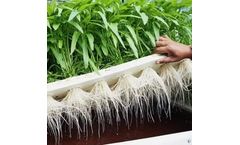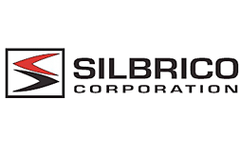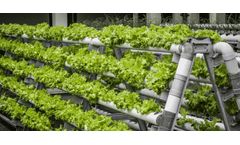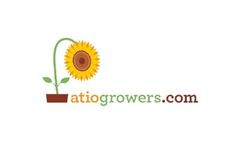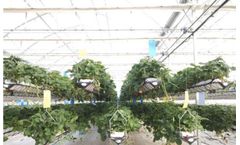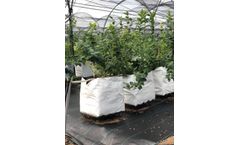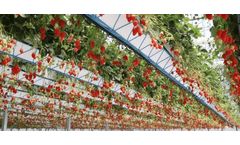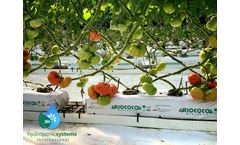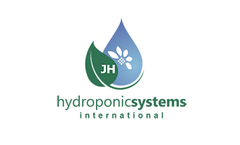Hydroponic Cultivation Articles & Analysis
45 articles found
Ozonated Water in Hydroponics: How Ozone Improves Water Quality and Plant Health Why Use Ozone in Hydroponics? In hydroponic systems, maintaining clean, oxygen-rich water is essential to ensure healthy plant growth and prevent root diseases. One of the most effective and natural solutions for water disinfection is ozone (O3), a powerful oxidizing agent used to sanitize nutrient solutions ...
The use of cocopeat is on the rise in urban farming. In this article, we will explore the uses of cocopeat and its diverse applications. Wondering what the term cocopeat means? Read on to understand more about his incredible product. ...
BySITCO
Kamala Farms is a leading name in hydroponic farming in India, and faced its own set of challenges in scaling operations and managing its network of client’s farms. By adopting KhetiBuddy’s farm management solution, Kamala Farms transformed its business process and consulting practices, optimizing its processes and driving significant improvements. Kamala Farms initially struggled ...
Offshore Cage Farms: Creating net-cage systems in open water to cultivate fish like salmon or tuna. Aquaponics Systems: Constructing closed-loop systems that integrate fish farming with hydroponic plant cultivation, where fish waste is used as fertilizer for the plants. Seaweed Farms: Establishing seaweed cultivation areas, ...
1. What is ozonated water, and how is it produced? Ozonated water is simply water infused with ozone gas (O3), a process achieved by passing oxygen through an ozone generator and dissolving it into water. ...
Mastering the pH Level in Hydroponics for Optimal Plant Growth Learn how to maintain the perfect pH level in hydroponic systems for robust and healthy plant growth. Explore essential tips and insights from experts in the field. Hydroponics has revolutionized the way we cultivate plants, offering an efficient and controlled ...
How do you monitor EC/PH and temperature and humidity while also keeping all of the information synced and easy to read? The UbiBot GS2 EC and PH value monitoring device is specifically designed for the agricultural hydroponic industry. Through the connection of an external EC or PH probes, the readings can be monitored as well as displayed on the large LCD screen for an instant view. After ...
ByUbiBot
Perfect Planting with the Power of Perlite Whether you’re a home gardener, a commercial grower, a nursery operator, or anyone else that wants the absolute strongest, healthiest plants for their application, you know that health begins in the soil. In fact, poor plant growth and other plant health issues in everything from turf grass to vegetables can be caused by soil problems, including: ...
Greenhouse pioneer Robert Poljet bids farewell to Rovero! There has been a change of heart at Rovero. Robert Poljet, who led the foil greenhouse builder for more than twelve years, is going to enjoy his retirement. Jacco van Delden is taking over the reins and is ending up in a comfortable position, which was created by Poljet's successful work. His successor wants to continue to grow and ...
ByRovero
Growing medium – For vertical farming, there are three different models. The first one is hydroponics, where lower water consumption and better efficiency are created by growing crops in water that is rich in nutrients and recirculated. Hydroponic farming is highly adaptable to the production needs and goals of the farmers due to the fact that it is scalable in ...
ByUbiBot
The Artesian Growing System is a gravity-fed wicking system which supplies water to the base of a container from where it is wicked up to the plant. At the heart of the system is our Artesian Water Control Valve. This special float valve won’t release water until the water from its previous release has been taken up by the plant. In this way the plant is always assured of fresh oxygen-rich ...
Commercial indoor farming is traditionally labour and energy-intensive, but it doesn’t need to be… To create and maintain a successful commercial indoor growing enterprise, it is essential to balance all the inputs and outputs related to your business. This can often be a delicate and all-consuming task. As your operation develops it can be difficult to see where savings can be ...
Hydroponic techniques emerged as a solution to the issues of growing directly on soil. Depending on the needs, the climate zone, the greenhouse and type of cultivation, we will be interested in working or not with a hydroponic ...
This has led to an increase in surface area and cultivation techniques. Soil is no longer a problem thanks to the existence of optimal substrates for growing blueberries. Of all the berries, blueberries require the most consideration for greenhouse cultivation. We are going to see some of them, as well as an optimal hydroponic growing system for ...
One of the main plants grown in hydroponics is the strawberry. The need for crop rotation is influencing the investigation of new forms of cultivation to give continuity to their ...
The comparison of the amount of water needed to produce a kilo of tomatoes in greenhouse cultivation systems without hydroponics and high-tech greenhouse cultivation with hydroponics yield… A series of differences: Greenhouse tomato cultivation without hydroponics: 30 ...
The Future has Begun The company B-Four Agro grows lettuce using the hydroponic method. The heads of lettuce, which grow in covered deep water cultures, find the ideal conditions here for quick and healthy growth. The efficient use of space, combined with a low consumption of resources, protects not only the environment but also enables the growing of lettuce at very low cost. An important ...
Hydroponic Systems International had the pleasure of join as a guest of honor the National Strawberry Festival in Jinan, China, last December, in order to share the most recent trends in technology currently working in Europe. ...
One of the main plants grown with Hydroponics is the strawberry. The Hydroponic system in soil is known as semi-Hydroponic. ...
Hydroponic cultivation in greenhouse without drainage recirculation: 22 liters per kilo of tomato. Hydroponic cultivation in the greenhouse with recirculation of drains: 10 liters per kilo of tomato. Hydroponic cultivation in high technology greenhouse with recirculation of drains: 4 liters per ...





